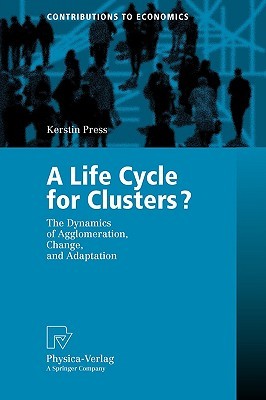
- We will send in 10–14 business days.
- Author: Kerstin Press
- Publisher: Physica Verlag
- Year: 2006
- Pages: 245
- ISBN-10: 3790817104
- ISBN-13: 9783790817102
- Format: 15.2 x 23.4 x 1.5 cm, minkšti viršeliai
- Language: English
- SAVE -10% with code: EXTRA
Reviews
Description
rium states but on the development process following an external shock, Kerstin Press adopts a new methodological approach. She develops a theoretic model of clusters, change and adaptation that is based on the N/K model of complex s- tems (Kauffman 1993). Taking the existing insight on the dynamics of N/K s- tems, propositions on the influence of cluster architecture on adaptability are - rived. In a second step, these propositions are tested by simulations comparing the adaptability of clusters with given differences in their architecture regarding the degree of division of labour on the one and the governance structure on the other hand. Both aspects (division of labour, governance) were found to matter for cl- ter adaptability in previous empirical studies but general causalities for their role in cluster adjustment could not be derived from individual case studies. Within the all else held equal perspective adopted in the simulation model, one explanation for how and when division of labour and governance matter for cluster adjustment is found. While the model faces several limitations, these are more to be seen as possible areas for future research. The present study opens up new avenues in cluster research. Rather than just focussing on emergence or existence, clusters are viewed as entities underlying a dynamic development. The analysis of their adaptability to external changes c- stitutes a first important step towards a non-deterministic perspective on cluster development.
EXTRA 10 % discount with code: EXTRA
The promotion ends in 21d.13:40:43
The discount code is valid when purchasing from 10 €. Discounts do not stack.
- Author: Kerstin Press
- Publisher: Physica Verlag
- Year: 2006
- Pages: 245
- ISBN-10: 3790817104
- ISBN-13: 9783790817102
- Format: 15.2 x 23.4 x 1.5 cm, minkšti viršeliai
- Language: English English
rium states but on the development process following an external shock, Kerstin Press adopts a new methodological approach. She develops a theoretic model of clusters, change and adaptation that is based on the N/K model of complex s- tems (Kauffman 1993). Taking the existing insight on the dynamics of N/K s- tems, propositions on the influence of cluster architecture on adaptability are - rived. In a second step, these propositions are tested by simulations comparing the adaptability of clusters with given differences in their architecture regarding the degree of division of labour on the one and the governance structure on the other hand. Both aspects (division of labour, governance) were found to matter for cl- ter adaptability in previous empirical studies but general causalities for their role in cluster adjustment could not be derived from individual case studies. Within the all else held equal perspective adopted in the simulation model, one explanation for how and when division of labour and governance matter for cluster adjustment is found. While the model faces several limitations, these are more to be seen as possible areas for future research. The present study opens up new avenues in cluster research. Rather than just focussing on emergence or existence, clusters are viewed as entities underlying a dynamic development. The analysis of their adaptability to external changes c- stitutes a first important step towards a non-deterministic perspective on cluster development.


Reviews